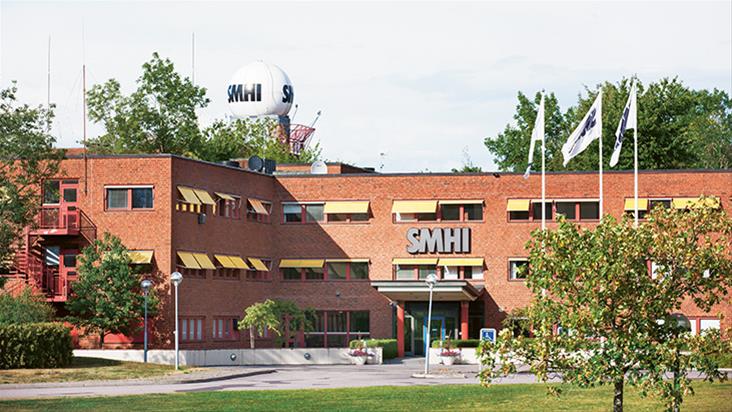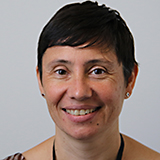HEPEX workshop on seasonal hydrological forecasting

Seasonal Hydrological Forecasting Workshop
21-23rd September 2015, Norrköping, Sweden
Thank you all for your participation!
The presentations and group photo are now available here
The workshop summary if available here
- Workshop Agenda and Book of Abstracts: here
- Info about how to reach SMHI, the ice-breaker (Day 1) and the dinner (Day 2): here
- Presentations will be live streamed. Check here how to follow them from your PC
Keynote talksUpskilling – Uncertainty reduction and representation in seasonal forecasting
“I will share with participants on the various methods we have developed to improve forecast skill and reliability, extend forecast range, and make forecast products more tailored to user needs in Australia” [read more=”Read more about QJ Wang” less=”Read less”] Dr Wang is a senior principal research scientist within the CSIRO Land and Water Flagship and is based in Melbourne, Australia. Dr Wang leads CSIRO’s research on water forecasting. Research by Dr Wang and his team has led to a national seasonal streamflow forecasting service operated by the Australian Bureau of Meteorology (http://www.bom.gov.au/water/ssf/). The service now provides forecasts for over 160 locations, including major water storages and river systems across Australia. Forecasts issued at the start of each month give the likelihood of streamflow exceeding a given volume in the next three months. Research by Dr Wang and his team has also enabled a new national short-term streamflow forecasting service, which provides daily forecasts of streamflow for the next seven days. Dr Wang has published widely, including many recent journal papers on streamflow and climate forecasting. Dr Wang graduated in 1984 from Tsinghua University with a “Graduate of Excellence” award. He completed his MSc and PhD studies at the National University of Ireland, Galway. Dr Wang was a senior lecturer at the University of Melbourne before taking up the position of principal scientist at the Victorian Department of Natural Resources and Environment in 1999. He joined CSIRO Land and Water as an OCE Science Leader in May 2007. Dr Wang was awarded the 2014 GN Alexander Medal by the Institution of Engineers, Australia [/read] ____________________________________ Hydrological Outlook UK: an operational river flow and groundwater level forecast at monthly to seasonal scale
“I will talk about the Hydrological Outlook UK, which is the first operational forecast system for Great Britain that delivers monthly outlooks of the water resources for the next 1 to 3 months for both river flow and groundwater levels. It is based on an expert-merging of three complementary methods: a statistical method based on river flow analogue and persistence; a Streamflow Ensemble Prediction System applied to selected catchments and boreholes; and a national hydrological modelling system driven by rainfall scenarios based on the UK Met Office ensemble rainfall 1 and 3 months forecasts.”[read more=”Read more about C. Prudhomme” less=”Read less”] Since 2012, Christel has been coordinating CEH research on droughts and leading a drought team to study, understand and model the development in time and space of water deficits in the UK and Europe, and their impact on the environment. She is the CEH Principal Investigator on the NERC-funded project IMPETUS that aims to assess and improve current ability to forecast droughts in the UK at seasonal lead time. She is leading the CEH input to the Environment Agency monthly Water Situation Reports. She is co-investigator of the NERC-funded project aiming to produce the first UK Drought Inventory starting from the late 19th century, and to develop a system-based understanding of drought and water scarcity episodes in the UK. For more info, visit the website: http://www.ceh.ac.uk/staffwebpages/christelprudhomme.html [/read] ____________________________________ Processing weather forecasts for hydrological ensemble forecasting and decision making in hydropower
“In the presentation we outline how information from weather forecasts for various horizons can be combined, using quantile mapping, and processed through the models to produce a seasonal hydrological ensemble forecast.” [read more=”Read more about Erik presentation” less=”Read less”] Statkraft is a leading company in hydropower internationally and Europe’s largest generator of renewable energy, with its core market being the Nordic region where the company is among other involved in the operation of more than 200 hydro power stations with a total capacity of about 13000 MW. Statkraft models inflow to its reservoirs using Powel Inflow (HBV-model), a precipitation/run-off model that simulates the run-off process in a catchment area on the basis of quantitative temperature and precipitation forecasts/scenarios. To capture future uncertainties, ensemble type weather forecast are used as input and various resources (i.e AROME, ECMWF ENS, ECMWF Monthly, historical scenarios) are available for different horizons, each with its strengths and weaknesses. However, for these forecasts to be of use for decision making in an operational setting, a clear process that balances inputs from the various forecasts needs to be in place. [/read] |
Seasonal forecasting is increasingly becoming part of water management activities and tools. This workshop will bring together researchers, operational forecasters, practitioners and end-users from all around the world to discuss the latest developments in hydrological seasonal forecasts and applications in the water management sector. [read more=”Read more” less=”Read less”]
The scientific themes will focus on advances in seasonal forecasting systems in terms of predictability and uncertainty assessments, as well as in terms of usefulness for risk and water resources management. The emphasis will be on hydrological applications. It will also focus on the dissemination and practical use of the forecasts to establish links with the end users. This is an important aspect to guide the developments in the right direction and take into account specific users’ needs.
The workshop will also set up the basis for a seasonal forecasting experiment with the goal to put together an international research effort to evaluate and compare various hydrological seasonal forecasting systems and bias correction methods.
This workshop will contribute to current activities towards setting up seasonal outlooks, integrated water management and multidisciplinary approaches for increased predictability of extreme events, topics that are at the heart of many research project and operational ambitions.
[/read]
The workshop is free of charge and will start on Monday morning, 21 September and end at midday on Wednesday, 23 September. For information on accommodation and travel, please see below.
Following the workshop, 24-25 September, the annual HYPE course Multi-basin modelling at the large scale using HYPE will be held at SMHI. The focus of the course will be on: processes in the cold regions (ice, snow) and spring flood forecasting. More information about the HYPE course you find here.
Workshop themes
The workshop will be organized in 6 themes with panel discussions, oral presentations, poster sessions, and lots of opportunity for discussions and sharing of experience:
- User needs of seasonal forecasts (hydro-power, groundwater, agriculture, insurance companies, health, safety-risk reduction)
- Statistical, dynamical and hybrid systems for predicting seasonal meteorological and hydrologic variables
- Progress in sub-seasonal to seasonal prediction
- Pre-processing, post-processing and calibration methods to enhance seasonal forecasting skill (data assimilation, initialisation, hindcasts)
- Communicating seasonal meteorological and hydrological forecasts in water management and risk-based decision making
- Examples of climate and water services providing and using seasonal forecasts
Deadlines and Milestones
| Deadline for receipt of abstracts | Extended to 30 June 2015 (after deadline, contact us here) |
| Letter of acceptance | 01 August 2015 |
| Letter of schedule | 15 August 2015 (see program here) |
| Deadline for registration | 15 September 2015 |
How to submit an abstract? (closed)
Submit a short abstract following the template (download abstract template here) to ilias.pechlivanidis@smhi.se, by the deadline indicated above.
How to register? (closed)
Registration is done through this web form.
Venue & Logistics

The venue for the HEPEX workshop will be at the Swedish Meteorological and Hydrological Institute (SMHI), Folkborgsvägen 17, Norrköping, Sweden (http://www.smhi.se/en/).
Information on travels and accommodation can be found here: Workshop_SMHI_venue-hotel-transport
![]() Support funding: Energiforsk, Swedish energy research centre
Support funding: Energiforsk, Swedish energy research centre
Organizing and scientific committee:
- Ilias Pechlivanidis (SMHI)
- Berit Arheimer (SMHI)
- Fredrik Wetterhall (ECMWF)
- Andy Wood (NCAR)
- Maria-Helena Ramos (IRSTEA)
Local contact:
Ilias Pechlivanidis
SMHI / Swedish Meteorological and Hydrological Institute
Folkborgsvägen 17, SE – 601 76
Norrköping, Sweden
Phone: +46 (0)11 495 82 58 | ilias.pechlivanidis@smhi.se




0 comments